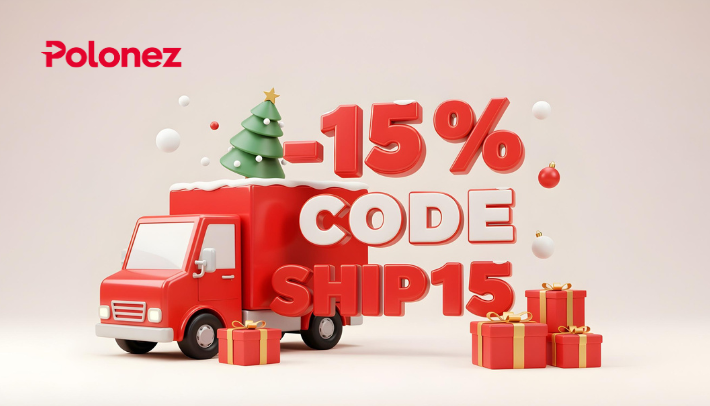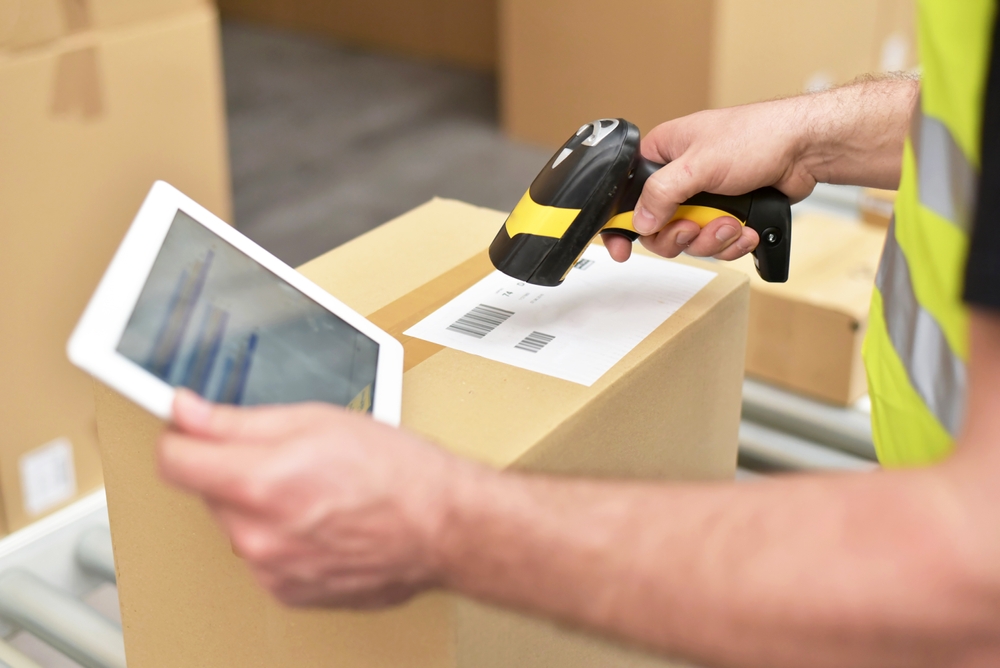Jun 16, 2025
Shipping from USA to Poland Means Opportunity

Shipping from the USA to Poland has been all the buzz in recent years as European countries increasingly become a prime destination for the U.S. e-commerce economy. While it continues expanding, successfully navigating this arena means understanding how it works.
Businesses on both sides of the Atlantic Ocean have to take stock of the shopping habits of Polish consumers and households, keep up with European Union regulations, and tackle the practicalities of international shipping. Simplifying your journey is the ultimate goal for shippers, helping you tap into this promising European economy.
Market trends and consumer preferences interact with customs requirements and shipping solutions in unique ways. However, consolidated shippers and package forwarders can guarantee products reach their destination and customers, households, families and consumers are satisfied.
Shipping from USA to Poland: Online and Consumer Habits
The shipping from USA to Poland arena is not just big – it’s booming. In 2023, this vibrant market was valued at $22 billion, with projections soaring to $31 billion by 2027.
This growth positions Poland as the 17th largest e-commerce market globally, making it a major player. By 2026, online sales are expected to account for 20 percent of all retail purchases in the country.
Polish internet users are embracing online shopping, too. In 2022, approximately 77 percent made purchases online, and nearly half of these shoppers buy something at least once a week.
While this figure still offers room for growth compared to some European Union neighbors, it reveals a strong online consumer base. The most active shoppers are between 29 and 49 years old, often residing in larger cities or even villages, with a notable 38 percent of Millennials aged 26 - 41 shopping online multiple times each week.
With internet access in Polish households topping 93 percent in 2022, the nation’s digital e-commerce infrastructure and consumer appetite is ready for more online engagement. Strategizing your future consolidated shipping and package forwarding needs is important right now.
First, take a look at the bigger picture when it comes to types of carriers, transit times, and today’s factors influencing air and ocean freight shipping:
|
Service Tier |
Carrier Examples |
Estimated Transit Time Range |
Key Influencing Factors |
|
Air Express |
Polonez, FedEx International Priority, UPS Worldwide Express, DHL Express. |
2-8 business days. |
Carrier network efficiency, direct flights, customs clearance speed. |
|
Air Standard/Economy |
Polonez, USPS Priority Mail International, FedEx International Economy, Polonez Air. |
5-17 business days. |
Mix of direct/indirect flights, consolidation, Poczta Polska (for U.S. Postal Service), customs. |
|
Sea Freight (Parcels/LCL/FCL) |
Polonez, Freight Forwarders. |
4-8 weeks. |
Vessel schedules, port congestion, transshipment, inland transport in Poland, customs. |
What Polish Shoppers Love to Buy Online
Shipping from USA to Poland means looking through the right lens: when Polish consumers head online, certain product categories consistently top their shopping lists. Fashion is huge, with clothing and accessories purchased by 79 percent of online shoppers.
Shoes follow closely behind at 66 percent, revealing strong demand for footwear. Cosmetics and perfumes are also popular, attracting 65 percent of digital buyers.
Beyond these domestic favorites, Polish consumers are interested in health and drugstore items, along with books, movies, music, and games. This appetite for international goods is driven by a desire for global brands and products that might not be readily available locally, or simply by the opportunity to snag them at more attractive prices online.
This cross-border retail and wholesale commerce isn’t just a niche. It accounts for 30 percent of all e-commerce transactions and continues to expand. It’s an opportunity for U.S. sellers offering unique or competitively priced items.
“Poland, also known as the ‘Tiger of Europe,’ is one of Europe’s leading economies and one the largest in Central and Eastern Europe (CEE),” states Thunes. “Home to over 40 million people, the country’s main sectors include: automotive, aerospace, information technology hardware and software, food products, transportation, pharmaceuticals, paper production and machine manufacturing.”
The United States exported $1.22 billion to Poland in March 2025 – a 12.4 percent increase from March 2024, when trade amounted to $1.09 billion. “Over the past 5 years, trade has grown at an annualized rate of 23 percent,” according to Observatory of Economic Complexity.
E-commerce Delivery and Shipping from USA to Poland
Underneath the shipping from USA to Poland e-commerce landscape, online marketplaces are the undisputed winners. About 86 percent of Polish shoppers prefer these platforms, with local giants leading the charge. Global players also hold significant sway.
When it comes to receiving their purchases, Polish consumers have a distinct preference: parcel lockers, or “paczkomaty,” are incredibly popular. Known for being an automated, self-service postal box that allows users to pick up packages and oversize letters, they’re the most convenient and cost-effective delivery method.
Traditional courier services are also used, and pick-up drop-off points at retail stores are another option. Poland boasts an impressive network, with over 31,000 pick-up points available. This strong inclination toward flexible, alternative delivery solutions is a defining feature of the Polish market and a consideration for any U.S. business planning its international logistics strategy.
Beyond delivery, social media is increasingly influencing purchasing and shipping decisions. The nation’s social commerce sector is expected to nearly double in size between 2024 and 2028.
Navigating European Union Value Added Tax Rules
Shipping from USA to Poland won’t be easy unless you understand the Value Added Tax (VAT) and its implications. A shift in how VAT is handled for e-commerce shipments to Poland and the broader European Union took effect in 2021.
These EU-wide reforms impact how U.S. businesses, organizations, and households calculate taxes. The biggest change was the elimination of the long-standing VAT exemption for commercial goods valued at 22 euros or less. This means that, regardless of their value, all commercial items imported into the European Union from non-EU countries are now subject to VAT.
This alters the pricing structure for lower-value products and increases compliance responsibilities for international sellers. To simplify VAT collection on smaller consignments – goods valued at 150 euros or less – the EU introduced the optional Import One-Stop Shop (IOSS) program. Non-EU sellers can register for an IOSS number in just one EU member state, allowing them to charge the correct VAT rate for the buyer’s country at the point of sale.
This collected VAT is then declared and remitted through a single monthly IOSS return. It was implemented to streamline the process for businesses and consumers.
Shipping from USA to Poland and Reforms in EU Customs
Putting aside the IOSS initiative that assists shipping from USA to Poland efforts and other enterprises, the European Union VAT reforms also introduced the concept of the “deemed supplier.” In certain transactions facilitated by online marketplaces, the marketplace may be designated as the deemed supplier.
This means the marketplace becomes responsible for collecting and remitting the VAT directly. This can simplify the process for individual sellers using their platform.
Additionally, industry players have had to distinguish between VAT and customs duties. While the VAT exemption for low-value goods was removed, the customs duty exemption for goods with an intrinsic value not exceeding 150 euros generally remains in place. This distinction is important for accurate pricing and compliance.
Overall, these VAT reforms require U.S. e-commerce sellers to review their pricing strategies and update checkout systems to accurately calculate and display VAT for Polish customers. Businesses must decide on their VAT compliance approach, whether it's IOSS registration, engaging a fiscal representative, or shipping Delivery Duty Unpaid (DDU), where the customer pays VAT upon import.
Relying on outdated VAT information can lead to frustrating customs delays and unhappy customers. Staying informed is important.
Overcoming Logistics and Customs Hurdles
Providing precise descriptions for products, correct Harmonized System codes, the true transaction value that includes insurance, and your country of origin on shipping from USA to Poland invoices is the right thing to do. Any errors can lead to customs delays, fines, or the seizure of goods.
Meeting Polish consumers’ expectations for delivery is another challenge. Since they anticipate flexible options, U.S. sellers have had to partner with carriers capable of offering last-mile solutions.
In general, the European inland waterway shipping market is also poised for expansion as fewer, larger entities dominate the industry to meet consumer demand. This has implications for all Europeans.
“The main products driving the European market are cereal grains, meat products, and dairy products, which fall under the category of dry bulk,” states Consultancy. “Other major dry cargo products include iron, coils, plates, pipes, and containers with anything from machinery parts to apparel.”
Furthermore, smaller Polish e-commerce platforms might have limited experience working directly with U.S. suppliers, potentially preferring EU-based sources due to complexities introduced by e-commerce rules. This means smaller U.S. brands might find it easier to sell directly to consumers or via major international online marketplaces rather than integrating with smaller local platforms.
Thankfully, investments in the U.S. mail-and-package supply chain network are helping port and air-freight hubs do their best to ease domestic concerns this side of the Atlantic. Some of these innovations are public-private partnerships.
Recently, the opening of a $270 million consolidated cargo center at John F. Kennedy International Airport was celebrated by The Port Authority of New York and New Jersey. The state-of-the-art facility “will consolidate operations from four separate cargo zones into a single modernized location, reducing congestion, streamlining operations and unlocking space for future development,” according to American Journal of Transportation.
Streamlining Returns and Exploring Shipping Solutions
There’s no doubt that shipping from USA to Poland involves navigating several logistical, customs, and operational challenges that consolidated shippers and packaging forwarders are prepared to handle on your behalf. Effectively managing international returns is also important for customer satisfaction and fostering repeat e-commerce business.
Returns from Poland back to the United States can be costly for either the customer or the seller, involve complicated reverse logistics, and create uncertainty around refunds. Fortunately, there are solutions.
Partnering with third-party logistics providers offering local return hubs within the European Union or specifically in Poland is a popular strategy. These hubs can receive, inspect, and consolidate returned products for bulk shipment back to the United States, or even handle refurbishment or disposal. This minimizes return shipping costs for customers and simplifies the process for sellers.
Online returns platforms can also empower customers to easily register and track their returns. When selling through major online marketplaces, utilizing their specific return services is usually required. While some offer label-free return options within Poland using their particular network, this is primarily for domestic returns or returns within a European network. Nonetheless, it indicates the type of infrastructure that international sellers might leverage through local partnerships.
For U.S. businesses looking for comprehensive shipping services to Poland, consolidating shipping solutions offer a range of options. Their core services include parcel shipments by sea or air, with regular and express air options, vehicle shipments to a local warehouse, and seafaring container shipping for all types of commercial goods.
Polonez America
Polonez America specializes in international shipments from the United States to Poland and 160 countries worldwide so you can customize your plans for shipping from USA to Poland. We offer parcel shipment via ocean or air, vehicle shipment, commercial LCL (Less than Container Load) and FCL (Full Container Load) shipping.
Our comprehensive range of services means customers can initiate package or commercial shipments from any of Polonez's authorized shipping outlets within the United States, which are then transported to our headquarters for sorting. Customers can send packages from authorized shipping outlets in the United States or by sending them via UPS, FedEx, or U.S. Postal Service to Polonez America's headquarters in Port Reading, NJ.
Polonez America is your expert in the resettlement process, collaborating with European partners for parcel services, customs, and delivery within Poland and other countries. We earn client trust through integrity and professionalism by delivering the highest quality service at the most competitive price.
Recommended to you

News
Dec 2, 2025
Don’t Miss Christmas Delivery!
CHRISTMAS IS JUST AROUND THE CORNER. There’s still time to send your holiday parcels to Poland — but the shipping deadlines are approaching quickly!

News
Dec 1, 2025
15% OFF Online Shipments
December Holiday Promo

News
Nov 24, 2025
How the Middle Warehouse Ensures Quick Delivery to Poland
U.S. online shops are reaching more buyers in Europe every year thanks to quick delivery to Poland and other countries.




